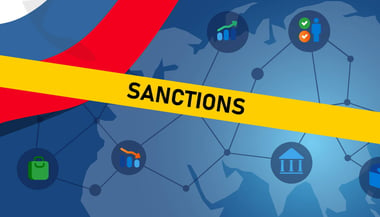In a world where financial crimes are becoming increasingly sophisticated, ensuring the integrity of customer information is more important than ever. Know Your Customer (KYC) processes are instrumental in this regard. However, these processes aren't static; they need periodic reviews and updates, often referred to as KYC remediation.
KYC remediation is a key undertaking for banks and financial institutions to ensure compliance with regulations and prevent criminal activities like money laundering and terrorism financing. This article aims to provide a comprehensive understanding of the KYC remediation process and its importance in the finance industry.
What is KYC Remediation?
KYC, short for 'Know Your Customer', is a risk assessment process designed to help financial institutions verify their customers' identities and assess their risk profiles. KYC remediation, on the other hand, is a more focused process that aims to maintain accurate and up-to-date customer data.
In an era of heightened anti-money laundering (AML) and countering the financing of terrorism (CFT) regulations, KYC remediation provides a critical line of defence for financial institutions. By ensuring accurate customer data and updated risk ratings, the remediation process helps institutions avoid regulatory penalties and protect their reputations.
An optimized KYC remediation process can also offer insights into customer behaviour, facilitating improved customer relationships and identifying new revenue opportunities. KYC Remediation is essentially the process of updating and verifying the customer data that banks or financial institutions hold. It involves revisiting the customer profiles to check for any inconsistencies, errors, or omissions and correcting them.
Read More: Why Is KYC Necessary for Banking Institution Security?
Read More: Enhanced Due Diligence Policies for KYC
The Importance of KYC Remediation
KYC remediation is important for several reasons. Firstly, it ensures compliance with AML/CFT regulations, helping institutions avoid severe penalties.
It also helps to protect an institution's reputation by mitigating the risks of financial crimes. Businesses that overlook changes in customer data due to constantly evolving regulations can face delayed reporting and substantial harm. But with a robust KYC remediation process, these risks can be minimized.
KYC remediation can improve customer relationships. By developing a deeper understanding of their customers, businesses can provide better services, enhance customer loyalty, and identify new revenue streams.
To summarise, maintaining up-to-date KYC records is critical for three primary reasons:
- Regulatory Compliance: Laws about how money and customer data should be handled are really strict and can change often. If a company doesn't keep up and make sure all their records are correct, they could get in big trouble and have to pay a lot of money as fines. So, following the rules is not just good practice, it's essential for avoiding costly mistakes.
- Risk Mitigation: Knowing your customer well isn't just polite; it's also smart business. The better you understand who you're dealing with, the easier it is to spot if something shady might be going on, like attempts to commit fraud. Accurate information allows a company to identify and stop risky transactions before they can cause damage.
- Customer Trust: When a company checks a customer's information thoroughly and keeps it safe, the customer feels more secure and trusting towards that company. This trust isn't just about feeling good; it's also the foundation of a long-lasting business relationship. A reliable KYC process tells customers, "We take your security seriously.
KYC Remediation Process and Examples/Case Studies
KYC remediation involves a series of steps that begin with gathering customer information. This could include personal details like name, address, and date of birth, as well as financial data such as income and source of funds.
Once the data is collected, it undergoes a rigorous verification process to ensure its accuracy and completeness. Financial institutions often apply a risk-based approach to this process, wherein customers are assessed based on their potential risk levels for money laundering and terrorism financing.
After verification, the data is used to conduct risk-based assessments. If the data suggests any potential suspects, they are reported to the relevant authorities.
Given the dynamic nature of AML/CFT regulations, it's crucial for financial institutions to regularly update their KYC data. This helps them stay in tune with their customers' profiles and maintain regulatory compliance.
The KYC remediation process typically follows these steps:
- Initial Assessment: The first step is to go through all the information the company already has about its customers. This is like a health check-up but for data. The company looks for any gaps or mistakes in the customer files to make sure everything is as it should be. This sets the stage for what needs to be done next.
- Gap Analysis: After the initial check-up, the company lists what's missing or needs updating. Maybe they don't have a customer's current address, or perhaps they're missing other crucial information. This step is like making a shopping list but for data.
- Customer Outreach: Next, the company gets in touch with customers to fill in the blanks. They might send emails, make calls, or even use snail mail. The goal is to gather any missing pieces of information or confirm that what they have is still correct.
- Data Update and Verification: Once the company has all the new data, it puts it into its system. But they don't just take it at face value. They often use other services to double-check that the new information is accurate. It's like cross-referencing your facts before stating them as truth.
- Compliance Check: Last but not least, the company makes sure that all this new, verified customer information follows the current rules and laws. If everything lines up, then they've successfully updated their records and are in the clear, legally speaking. This final step is like checking your answers before handing in a test.
Case Study: A leading European bank faced regulatory action due to incomplete KYC records. A comprehensive KYC remediation strategy was implemented, involving steps like advanced analytics for gap analysis and automated customer outreach, reducing the remediation cycle time by 30%.
Common Challenges in KYC Remediation
- Data Volume: Imagine trying to read every book in a library in one go; that's what the data volume feels like for companies. There's so much information to go through that it can become a Herculean task. The sheer amount of data can slow down the remediation process and make it harder to spot errors or gaps.
- Regulatory Complexity: Imagine if you had to follow the driving rules of multiple countries while navigating through a single city; that's the kind of complexity banks face. They have to comply with different sets of rules depending on where they operate, and sometimes these rules can even conflict with each other. This makes the KYC remediation process incredibly complex and challenging.
- Resource Intensive: Think about hosting a big, fancy wedding; it's expensive and takes a lot of planning and people to make it happen. The same goes for KYC remediation. It requires a lot of resources—both in terms of time and manpower—which can be costly for the institution.
Best Practices in KYC Remediation
- Automation: Imagine if you had a robot to clean your house; it would save you time and probably do a better job at avoiding mistakes like missing spots. Automated tools can do the same for data gathering and analysis, reducing the chances of human error and speeding up the process.
- Regular Audits: It's like going for regular medical check-ups even when you feel healthy. Periodic internal reviews can help catch problems before they become emergencies, making it easier to fix them and avoid potential legal issues down the line.
- Employee Training: Think of it as ongoing education. Staff shouldn't just be trained once and forgotten; they need to be continually updated on the latest compliance requirements and internal procedures to perform their jobs effectively.
Risk-Based Approach in KYC Remediation
A key aspect of the KYC remediation process is the risk-based approach. This approach allows financial institutions to identify customers who pose higher risks of engaging in money laundering or terrorist financing.
In a risk-based approach, customers with higher risk profiles are subject to more extensive verification measures. This helps to mitigate risks and ensure compliance with AML/CFT regulations.
The Role of Technology in KYC Remediation
The advent of technology has significantly changed the landscape of KYC remediation. Automation, artificial intelligence (AI), and other digital tools have made the remediation process more efficient and accurate.
For instance, Tookitaki’s Anti-Money Laundering Suite, an AI-based compliance solution, provides advanced screening and monitoring capabilities that help companies comply with AML/CFT regulations. It automatically screens customer data against various databases, including sanctions lists, PEP lists, and watchlists.
This technology-driven approach minimizes false positives and ensures an accurate, efficient, and up-to-date screening process. It also supports compliance monitoring by continuously monitoring customer transactions and behaviour.
Conclusion
In conclusion, KYC remediation is an essential process for banks and financial institutions to maintain compliance with AML/CFT regulations and fight against financial crimes. With the help of technology, the remediation process has become more efficient and accurate.
Therefore, investing in a robust KYC remediation process is not only a regulatory necessity but also a strategic decision that can help businesses mitigate risks, improve customer relationships, and explore new revenue opportunities. With the right strategies and tools, like those offered by Tookitaki, the process can become less cumbersome and more effective.
Frequently Asked Questions (FAQs)
What does KYC remediation mean?
It's the process of updating and verifying the customer information that a bank or financial institution holds.
How does KYC remediation differ from initial KYC checks?
While initial KYC checks are conducted at the time of customer onboarding, KYC remediation is an ongoing process that updates and validates existing customer information to ensure compliance.
Why is KYC remediation essential?
It helps in regulatory compliance, risk mitigation, and enhancing customer trust.
What challenges do financial institutions face in KYC remediation?
Financial institutions often struggle with data volume, quality of data, and frequent changes in compliance regulations during KYC remediation.
What are the best practices for effective KYC remediation?
Regular audits, leveraging technology, and staff training are generally considered best practices for effective KYC remediation.
Anti-Financial Crime Compliance with Tookitaki?



